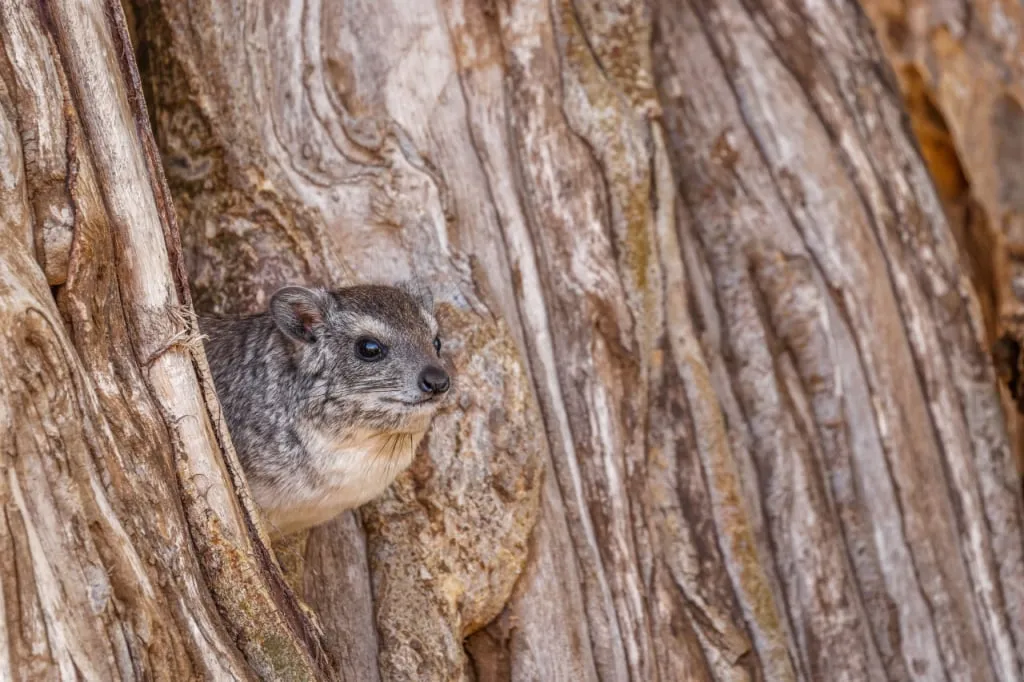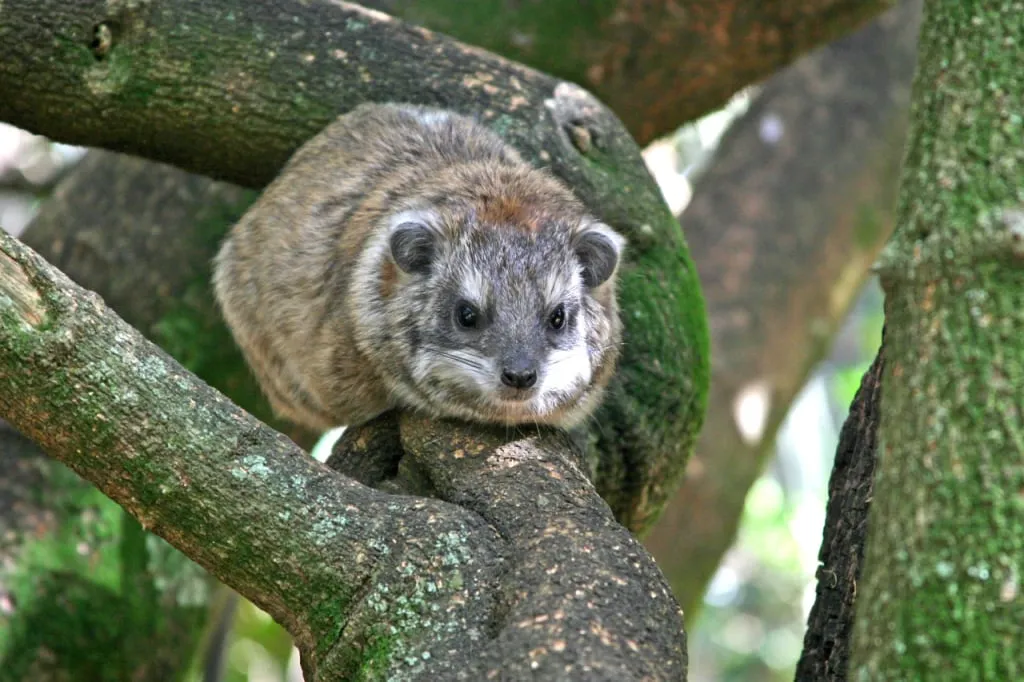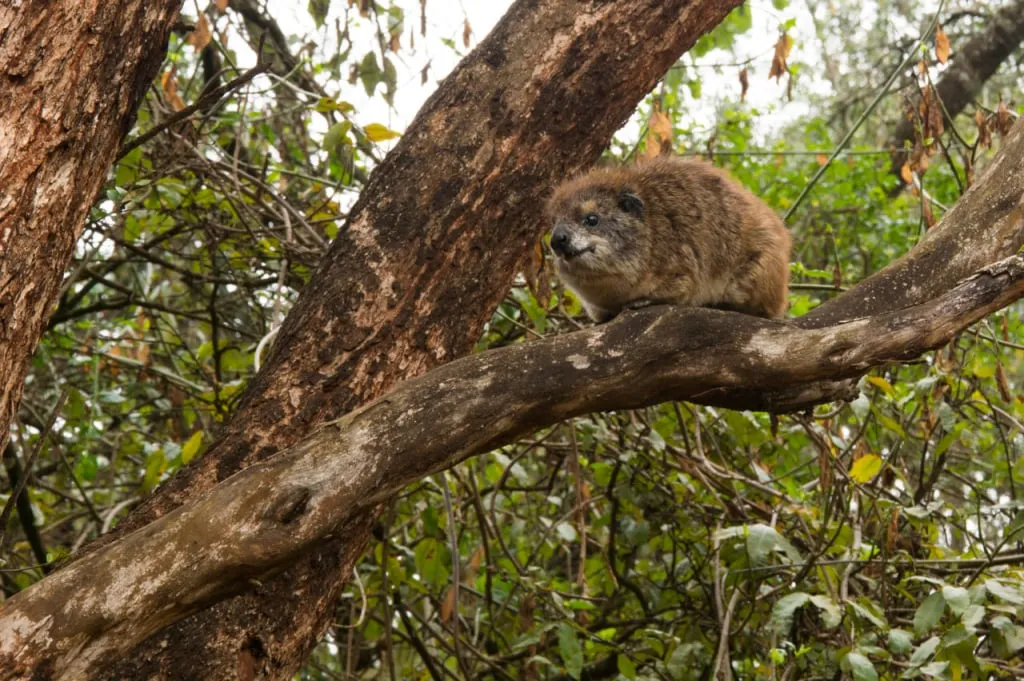Tree hyraxes, much like their terrestrial counterparts, seem like creatures plucked straight from a child's imagination or a fantasy tale. These animals, bearing a kinship with elephants yet looking akin to rodents, nimbly navigate the treetops like monkeys and serenade with the vigor of a nightingale. Here, we shed light on the recent discoveries science has made about these remarkable animals.
Nature’s enigma: who are hyraxes?
At first glance, hyraxes bear a resemblance to ground squirrels, oversized guinea pigs, or perhaps small beavers – giving them an appearance typical of rodents. The tree hyraxes remained largely elusive to scientific research for a considerable time. These creatures, native to Africa and the Middle East, were documented in the latter half of the 18th century. However, their initial classification as mere rodents meant they often remained just footnotes in natural history.
Approximately a century later, scientists decided to take a closer look at hyraxes, yet they made another misjudgment, categorizing them with perissodactyls (a group that also includes, for instance, zebras, rhinos, and tapirs). The three-chambered stomach of the hyraxes, their dense claws, and their habitual masticating movements misled the zoologists.
Only with the advancement of genetics was it finally possible to accurately determine the origins of hyraxes. The discovery was truly astonishing: the closest relatives of these at-most 4-kg (8.8-pound) creatures are elephants, as well as dugongs and manatees.
From the Paleocene to the present day: how have hyraxes evolved?
About 65 million years ago, hyraxes, proboscideans (like elephants), and sirenians (like manatees) had a common ancestor — let's call it the "protohyrax." It led an aquatic and later semi-aquatic lifestyle. Over time, part of that population ventured onto land, while others remained aquatic, eventually evolving into modern-day manatees. The protohyraxes that took to the shores encountered minimal competition since the dinosaurs were nearly extinct by that period. This allowed those ancient animals to freely spread across Africa by the end of the Eocene (around 40 million years ago).
As their range expanded, so did their appearance: protohyraxes adapted to new environments, populations branched out, and each lineage followed its own evolutionary path. This common ancestor gave rise to a myriad of forms, varying in size from an elephant to a rodent.
They were the primary herbivores in Africa until gradually displaced by bovids (antelopes, oxen, buffaloes). By the end of the Pliocene (about 2 million years ago), each branch that developed from the common ancestor firmly occupied its niche and took on distinct features, which have been preserved to this day — including hyraxes.
Modern hyraxes inhabit Africa and the Middle East. These small creatures, covered in thick fur and roughly the size of a large cat, weigh between 1.5 to 5 kg (3.3 to 11 pounds). They are classified into three genera — bush, rock, and tree hyraxes. Regardless of where they reside, there's an intriguing characteristic in their anatomy that allows them to nimbly climb trees and cliffs.
The soles of their feet are bare and covered with a unique epidermis, similar to thick rubber. Sweat glands located on these pads constantly moisturize the skin, and specialized muscles can stretch the skin, creating a suction effect. This allows hyraxes to quickly and nimbly traverse any surface, even vertical cliffs, and effortlessly descend headfirst.
How are tree hyraxes similar to elephants?
The quest to determine the origin of the hyrax took scientists well over a century. So, what eventually led them to the right track? Primarily, it was the structure of the hyrax's feet: on their front limbs, they have four toes with flat nails (resembling small hooves). On their hind limbs, they have three toes, with one nail curved for convenient grooming. These hoof-like nails became the defining morphological feature, leading to a breakthrough in genetic "investigation": such nails are present on elephants and on the edges of the fins of manatees.
By the way, grooming is not merely a whim but a survival necessity for hyraxes. Due to their habitat's characteristics, they must adapt to constant temperature fluctuations. In a day, their body temperature can increase or decrease by 12-15˚C (21.6-27°F). To ensure their fur withstands these thermal changes, they must meticulously care for it, continuously oxygenating the space between hairs. Thus, hyraxes indulge in grooming for several hours daily.
Another clue for scientists was the tusks. Elephants have prominent and noticeable tusks, while hyraxes have smaller ones formed from incisors, just like in elephants. In contrast, most other animals form tusks from canines, as seen in walruses and boars.
The list of similarities with their larger relatives doesn't end there. Hyraxes, like elephants, have mammary glands located in the armpits and groin area, and males have testicles concealed in the abdominal cavity near the kidneys.
What's special about tree hyraxes?
Tree hyraxes, unlike their bush and rocky counterparts, are nocturnal animals, which is why they managed to elude researchers for a long time. As a result, they aren’t as well-researched as other species of hyraxes. Today, scientists have identified four species of tree hyraxes:
- The Southern tree hyrax, which resides in East and South Africa in subtropical or tropical dry, moist, lowland, as well as mountainous forests, savannahs, and rocky regions.
- The Eastern tree hyrax, endemic to Tanzania and Kenya, primarily inhabits the foothills and mountain forests of Kilimanjaro, Meru, and Udzungwa.
- The Benin tree hyrax, which lives in West Africa in the region between the Niger and Volta rivers.
- The Western tree hyrax, found in subtropical or tropical moist lowland forests, savannahs, and rocky terrains of West and Central Africa.
The fur of tree hyraxes is longer and a tad silkier than that of other species. The shade of their plush, dense fur varies with their habitat, ranging from pale gray to light or dark brown. This varying coloration serves as an evolutionary camouflage mechanism: they sport a darker hue in humid regions abundant with green vegetation, while in arid zones, their color tends to be lighter.
Diet-wise, tree hyraxes mirror their relatives: they have a preference for leaves, fruits, branches, and bark, often scaling to the forest's topmost canopy to fetch them.
Furthermore, tree hyraxes emit a variety of sounds that are challenging to describe: they sing, imitate the trills of nightingales, bark, scream, squeal, click, whistle, and growl all at once, with the noise easily exceeding 100 decibels. The songs might differ slightly from species to species, and it is one of the criteria that help the researchers classify various species and subspecies of tree hyraxes. Scientists have found a new type of tree hyrax call which they named a "strangled thwack" - and it might potentially lead to the discovery of a new species of tree hyrax.
The vocalization of tree hyraxes can be compared to the songs of birds, the calls of whales, and the ultrasonic communication of bats. This wide range of sounds is crucial for everyday communication within the group, signaling danger, and during the mating season when attracting a female's attention is vital.
Hyraxes residing in different regions can understand each other, similar to humans speaking in different dialects, although it requires some time.
By the way, it is predominantly the males that make these loud noises. Females can make noises too, but they are much softer and quieter, as they lack air sacs and an enlarged larynx.
On a Kilimanjaro climb following the Lemosho route, travelers might be serenaded by the distinctive calls of the tree hyraxes. An overnight stay in the first camp in the forest could become memorable due to the enchanting songs of these creatures.
Vulnerable species
Tree hyraxes remain relatively understudied, but scientists are already deeply concerned about the future of these animals. In 2015, the Eastern tree hyrax was classified as Near Threatened by the International Union for Conservation of Nature (IUCN). Natural predators such as leopards, eagles, and African pythons, along with habitat reduction, are considered the principal risk factors.
Human interference also plays a role in the decline of tree hyraxes’ population. Some individuals attempt to domesticate these cute creatures and keep them as pets.
Yet, tree hyraxes fare worse in captivity than other members of their order. Unlike the rock and bush hyraxes that live in groups and need socialization, tree hyraxes are solitary creatures. They prefer the company of only their family, with whom they spend almost all their time in hollows or burrows. These are timid and cautious beings that should never be taken from their natural habitat, much like any other wild animal, even if it seems easily domesticated.
It's best to get acquainted with these marvelous creatures in their territory and when they allow it. Seeing tree hyraxes isn't easy due to their nocturnal habits, but one can feel like a true explorer by going on a safari after sunset and trying to hear their unparalleled singing. During a trip through Tanzania's national parks accompanied by Altezza Travel, one can also encounter other, more active hyraxes – rock and bush ones. These creatures are quite curious, and if approached cautiously, giving them time to get used to one's presence, they might even show interest in humans.




















